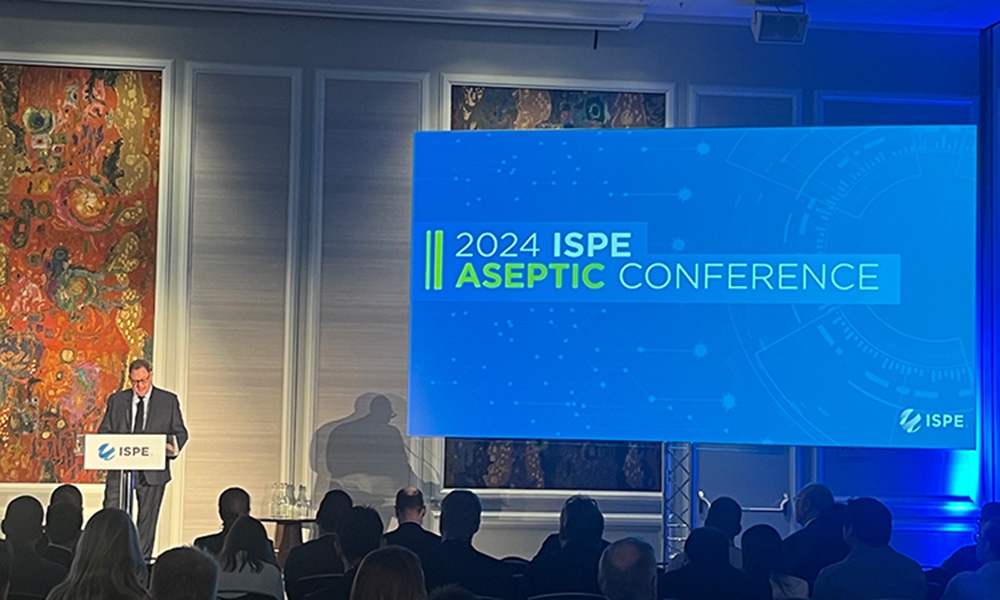Regulators Share and Engage on Day 3 of the 2017 ISPE Annual Meeting & Expo

Disclaimer: This is an abridged, unofficial summary of FDA regulators’ responses during a panel discussion at a conference that has not been vetted by the agency. The responses below are an informal and brief synopsis of the panel’s views, and do not represent official guidance or policy of the FDA.
Christine M. V. Moore, PhD, Global Head and Executive Director, Merck & Co., led the Global Regulatory Town Hall on the third day of the ISPE 2017 Annual Meeting & Expo. The session hosted regulators from the FDA, Russia’s State Institute of Drugs and Good Practices, and Brazil’s ANVISA, who shared their perspectives, answered audience questions, and engaged in lively discussions.
Ellen Morrison, Associate Commissioner, Global Regulatory Operations and Policy, Office of Regulatory Affairs, FDA, opened the session.
“I have some exciting news to announce,” she began.” Today,” she continued, “the FDA took an unprecedented step toward more efficient global pharmaceutical manufacturing inspections. As part of the mutual recognition agreement (MRA) between the United States and the European Union (EU), the agency has completed capability assessments recognizing the drug regulatory authorities of Austria, Croatia, France, Italy, Malta, Spain, Sweden, and the United Kingdom as capable of conducting inspections that meet FDA standards.”
“Emerging and developing economies are gaining prominence,” she said. “Inspecting ports of entry is no longer adequate. Globalization is an overwhelming force. Other countries provide approximately 30% of medical devices and 80% of drug ingredients. At every step of the production process there are opportunities for adulteration.”
“We have been working with other countries; in 2016 we conducted more foreign inspections than in the previous year. Criminal investigations resulted in 305 convictions. But we can’t do it all. We need to work with other foreign regulators.”
The MRA will allow the FDA and the EU to use inspection reports conducted by either party to determine if a facility is manufacturing high-quality drugs. The agreement covers routine surveillance, GMP, and, sometimes, preapproval inspections. There are some exclusions: veterinary products, vaccines, biologics will be considered for inclusion at a later date.
The FDA itself was assessed in 2015 and is recognized by the EU. The agency is projected to complete its evaluations of all EU member states by 15 July 2019.
Vladimir Orlov, Deputy Head, Educational Center for Good Practices, State Institute of Drugs and Good Practices, Russia, spoke about key trends from Russian inspections of foreign medicinal facilities.
“I would like to thank ISPE senior management, Mr. John Bournas, and Mr. Mike Arnold for allowing me to be here. I was invited during my October visit to ISPE headquarters in Bethesda.”
In April 2016, the Russian Federation began to inspect manufacturing sites for GMP compliance in 40 countries. Of the 1,801 nonconformities observed at 188 foreign manufacturing sites, 7% were classified as critical, 43% as major, 50% as “other.”
Six categories of critical nonconformities comprise 80% of all critical observations. They are: Noncompliance with marketing authorization dossier, microbiological contamination and sterility assurance, premises and equipment, validation and qualification, measures to prevent cross-contamination, certification by a qualified person and batch release.
Alessandra Paixão Dias, Specialist in Regulation and Health Surveillance Advisor of General Office of Drugs, ANVISA, spoke about ANVISA’s global priorities.
Created in 1999, ANVISA’s mission is to “promote and protect the health of the population and intervene at the risks involved in the production and use of products and services subject to sanitary surveillance.” The agency has 3,000 employees—health regulation and surveillance specialists, regulation technicians, and administrative personnel.
The agency regulates drug quality, efficacy, safety, and legal documentation. Its priorities are to streamline and optimize work processes, standardize and improve technical and administrative procedures, promote more transparency and predictability, share responsibility with the regulated sector, and regulatory convergence with international standards. ANVISA was accepted as a member of ICH in 2016.
The remaining panelists were Richard Friedman, Deputy Director, Science and Regulatory Policy, FDA/CDER/OC/OMQ, and Dr. Mahesh R. Ramanadham, LCDR, PharmD Mahesh, both of whom represent the US Food and Drug Administration (FDA).
After the introductory session, the panel answered questions submitted by attendees.
When do you expect to see Germany become part of the MRA?
Morrison: That’s still under discussion in the EU. We hope it will be this year.
What constitutes a critical vs. major nonconformity in the Russian inspections?
Orlov: I cannot give all details of any nonconformity, but if there’s no testing, no release testing performed, that would be a critical nonconformity.
With the approval and growth of personalized therapies, i.e., CAR T-cell therapy, what regulatory policies/inspection challenges are anticipated?
Morrison: I think there will be challenges. We’ll have to think about the clinical side to look at what policies we’ll need to implement. On the inspection side, I think we have to study with the centers.
Orlov: In Russia there are some gene therapy products. For me it’s best to take experience from other countries. They’re working a lot on this. I would also look for documents from PIC/s and then we could use them.
What is the future of ICH Q 12? And how will the lifecycle of the control strategy in manufacturing evolve if not in Q 12?
Ramanadham: We’ve made changes to account for things we’ve learned. We’re working with the management committee for ICH for the evolution of a control strategy. There are challenges to making changes post approval. The future of Q12 is where we need to be going. We’re just waiting on some final steps.
EU regulations allow risk assessments to justify and determine the controls to allow manufacture of high-hazard products in shared facilities. Do FDA, ANVISA, and Russia’s State Institute of Drugs do the same?
Orlov: Russian manufacturers must follow even stricter rules than foreign manufacturers. Hormones, beta-lactams, etc., still must have segregated facilities. We follow most modern trends of EU guidelines, which describe measures to produce products in shared facilities. We think that this is possible.
Friedman: For the FDA, a risk assessment is a way to communicate a plan for segregated products and high-hazard products. But it’s a means to an end—it’s not required. A risk assessment allows for systematic approaches to decision-making. It’s advantageous to a company. But it has to be done well, assessing risk in the right way. We’re looking to science for the basis for determining the separation concept. It starts with dedicated equipment, dedicated rooms, and air systems. For beta-lactams, they must be completely segregated, with no opportunity for any passage of people or anything between two halves of a separated building. But otherwise, the GMPs are flexible. There are ways to do things to avoid cross-contamination.
A sterile session yesterday indicated that open aseptic processing is acceptable for certain low-volume high-value products. WHO regulations say no human contact is acceptable. What is the position of the FDA?
Friedman: No process should ever have human contact. Open aseptic processing could include extensive barriers. There are some very advanced processes that are used, including open RABS. So the term is a little nebulous. If you mean a truly open process with no barrier, I can’t imagine accepting that. They’re right in terms of no human touching sterile items. But human interaction of the process is necessary. We hope that the Vision 2030 will be to move to gloveless isolators.
How are factors such as inspection history, complexity, time since last inspection, etc. weighted in the site-selection model?
Orlov: We use a risk-based model. We cannot change the frequency of inspections for now. But we consider these things when we plan the inspection, as well as the quality and the number of inspectors. We can also have a “documentation inspection”: an inspection with no visit.
Ramanadham: We use risk-based principles to decide where to do inspections, and we consider these things, but we combine them to help reviewers find the hot areas that require special oversight. So the idea is that this risk-based assessment goes beyond the site and ensures that we get the right inspectors to the site.
How were the first eight countries recognized under the MRA chosen?
Morrison: I’m not sure, but they may have been the countries that were being inspected on the EU schedule.
[Question from the floor] This is a question for Vladimir, but others can weigh in too: Your most common inspectional finding was noncompliance with the marketing authorization dossier. How many of those were products manufactured for multiple markets or for post-approval changes in other countries, but not in (or are still under review in) Russia?
Orlov: How do we evaluate registration data for other countries? We have no chance to see other registration because we just see marketing authorization materials. This issue with noncompliance with the dossier comes through years: Previously we had no GMP inspection of foreign manufacturers. Sometimes we see that there is a lack of communication between the manufacturing side and the Russian Federation. Even though there are some special requirements required by the federation, they may not be communicated to the manufacturer. The people onsite don’t know that special testing is required for the Russian market, for example. This is not the fault of the manufacturer. But it’s a deviation from the GMP guide. Foreign manufacturers need to pay more attention to how they communicate with Russian colleagues.
Friedman: In the 2015 revision of ISO 9000, two things had to be improved: communications and competencies, with the tension between doing a CAPA (not just plugging a hole in the dam) and a real formulation. It’s important that a CAPA is done promptly. ICH Q 12 will hopefully promote improvements to be done in a prompt fashion so that the consumer will benefit.
Ramanadham: The ICH Working Group perspective is one of the main concerns we had. We approve an application and then things lose their focus and they lose track of the lifecycle. Some regions had very different ideas of what compliance with the marketing authorization meant. In Q 12 the attempt is to harmonize things that were to change post approval. It was interesting to hear those concerns. If we do this correctly, then we ought to be streamlining changes that are rooted in good science and ultimately serve the patient. No one wants to be a barrier to patients getting the medications they need.
Is there an expectation to update the dossier if new critical process parameters or critical quality attributes are identified as you gain more knowledge about the manufacturing process or the product?
Dias: If it’s an important subject, we will evaluate it before giving the answer. Depending on the difference that’s identified, maybe it’s not necessary. But if it’s important, we have to evaluate it for approval.
Ramanadham: GMP governs all operations. We don’t have good pathways in the existing paradigms. This is one of those “it depends” questions. Are we learning something that requires us to change the way we’re acting? This is where Q 12 comes into play. We have to accept is that it’s a double-edged sword. The incentive is that you’ll learn things. That has to be made clear too. This is one of those indicators of the right culture, knowing that we’re moving the right direction. If we’re updating each other on what we’re learning, this indicates a culture focusing on the right quality.
Is the FDA in the midst of a brain drain? What are you doing to ensure that your inspections are being conducted by experienced inspectors?
Morrison: We don’t have a brain drain. What’s important is the transfer of knowledge. Training is one thing, but learning from case studies and our own experiences is what we share. I hope that getting FTE (full-time employment) levels to increase that we get not only the young perspective, but hire from outside to get the best folks if we don’t have them from within. But I wouldn’t say we’re in a brain drain.
Moore: There are often many jobs at FDA. Check out usajobs.gov.
Morrison: Foreign inspections are draining to people. The challenge of inspections in India and China, the constant travel, is tough for extended periods of time. That’s another reason people have left.
What is your opinion regarding key benefits and/or risks of Industry 4.0/digital plant capabilities? How are regulatory agencies preparing for these emerging big data technologies?
Morrison: These are interesting questions for how we look at the amount of data in the aggregate. How do we think about this from a regulatory perspective?
Ramanadham: One fun challenge of working at FDA is that you have to keep things moving for today, but also think about the future. These new ways of manufacturing and designing products are producing intense dialogues that challenge the way we think. That’s the advantage of coming to conferences like this, because we make it clear the we want to talk about it. We have an obligation to start thinking differently.
Friedman: I’ve heard industry talk about having the right competencies and to adapt them and also harness big data for pattern recognition. But they’re nothing without domain experts. Ramanadham and I are both on the ETT (Emerging Technology Team). Competencies for the twentieth century are much different than for the twenty-first century. We need engineers, statisticians. We have to adapt training for investigators so they understand what matters and what doesn’t in terms of PAT. We have started to hire people who have PhDs in this area. We have to adapt to more advanced science, and people with more advanced degrees in science. There’s a lot for us to do to adapt.
Moore: On behalf of ISPE, we support moving forward, and we have the Pharma 4.0 conference coming up. And as you heard, we’re partnering with Brazil and Russia. I expect those to continue.
Dias: We have limited resources, so things go slowly, not at the pace we need. In many situations we need to go the regulatory sector for help. So we don’t go at the same pace of the industry because of our limited resources. It’s a challenge for us. But we’re always talking about how to improve things.
Orlov: I agree. Resources are always limited. ISPE is a driver for innovation. We will follow the driver, but we cannot be the first in this process.
Summary
Ramanadham: I love the opportunity to push boundaries and think about what we’re going to do tomorrow. If you were in the plenary yesterday talked about different ways of thinking about things—what a great challenge for regulators. We have to look outside of the box we’re in now and find new ways of doing things.
Morrison: Thank you for inviting me. I’m grateful to work across the agency with our colleagues so we can make the inspectorate the best it can be. It’s also great to work in the international space. Training and meetings can be focused on inspectorates in other parts of the world.
Dias: Thank you, again, ISPE, for the opportunity.
Orlov: I would like to thank my colleagues. We made good teamwork. This is a model of a very good dialogue between industry and regulators. We are trying to be open and transparent.



